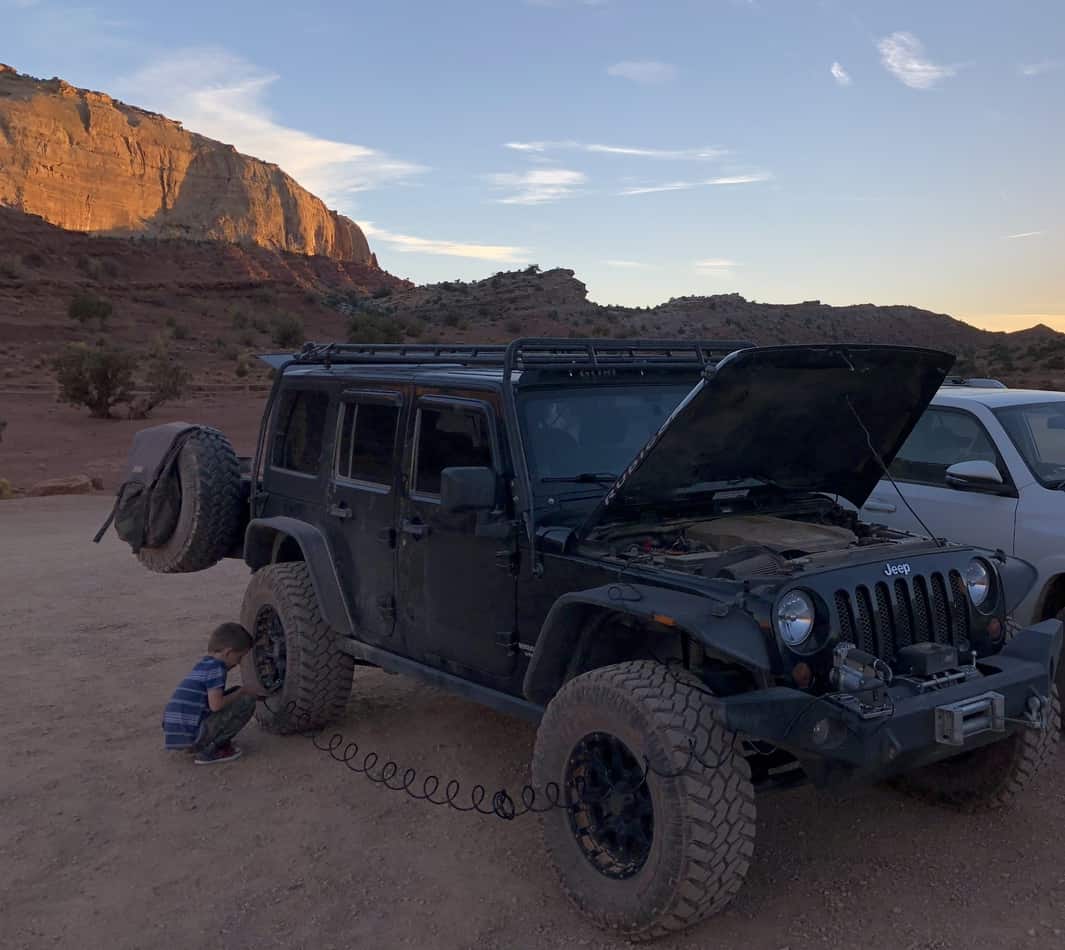It’s not uncommon when heading out on the trail to see a rig or group of rigs either airing down their tires or filling them back up after spending the day on the trail. So that begs the question? Do you really need to air down when off-roading? Is it really worth the time spent when you are not planning on taking on any technical terrain? Let’s dig in!
3 Reasons You Should Air Down When Offroad
There are three key reasons or benefits that come from airing down and we are going to break each one down in depth.
1. Improved Ride: This is actually the main reason you should air down anytime you plan to spend any significant amount of time off-road. Spending an entire day out on the trail while fun, can take a toll on you physically, especially if you are being jostled around all day on a super rocky or corrugated (Washboard) filled trail.
Lowering your tire pressure can help smooth out the ride by allowing your tire to take on some of brunt of each obstacle rather than you. The concept is pretty simple, each time your tire comes across a bump or washboard the lower pressure tire absorbs the blow and reduces bouncing that leads to shaking and jostling within the cabin. It’s something you have to really test to believe but you will be amazed at just how much more comfortable your Jeep feels off-road after you start letting a little bit of pressure out.
2. Better Traction: Traction is a key component to conquering an obstacle on the trail. There is no substitute for it when needed and airing down can help increase it substantially. Decreasing the air pressure within a tire can significantly improve traction by increasing the amount of tread that touches the ground. When you let air out of your tire the weight of the vehicle pushes the tire down and out, which then pushes the tread pattern out resulting in more tread touching the ground at once. The larger the contact patch with the ground is the more likely your tire will find traction and pull you through and over obstacles.
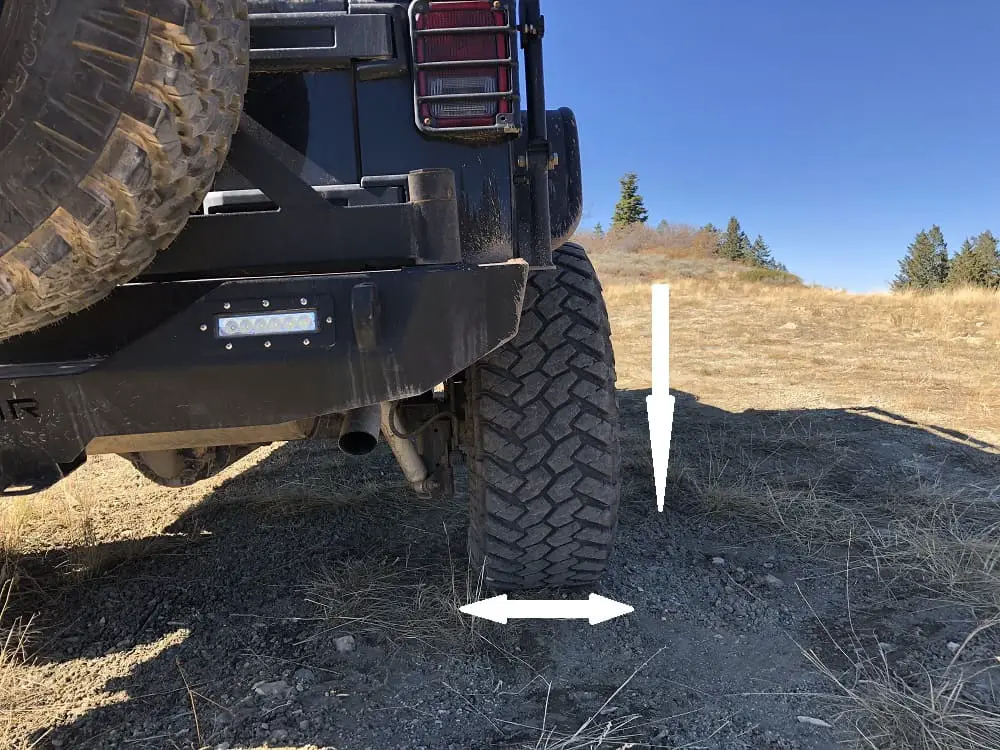
This is especially useful in snow, sand and mud as it can do wonders for a vehicles ability in these settings. Rather than digging down and getting high centered your rig will grip the terrain and help keep your vehicles momentum moving forward which will help prevent getting stuck. Additionally on hard terrain like slick rock, the increased grip provides key traction with it’s ability to gain traction and mold around objects for a better grip.
3. Malleability: Tires take a beating off-road from cruising over sharp rocks or sliding into side wall puncturing roots. Lowering your tire pressure can help prevent punctures because your tire will be more malleable during impact. So if you are climbing up a steep ledge with a sharp overhand your tire will give into the sharp impact without puncturing your tire and then mold around the object to help increase your traction and pull your Jeep over the ledge. Additionally impacts to the sidewall from sharp rocks and roots are less likely to puncture your side-wall which will help keep you on the trail longer. You can see in the picture below how the tire is giving way to the rock just enough to prevent a puncture and actually helping the Jeep get better traction through this obstacle.
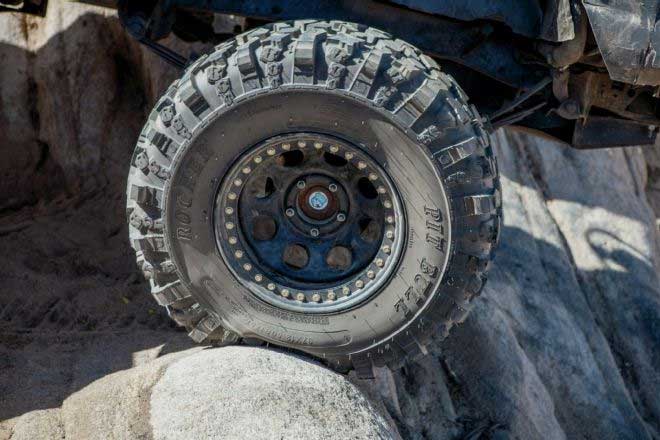
What Pressure Should You Go To?
The short answer is there is no perfect pressure. The weight of your vehicle, tire choice and even rim will impact what pressure is best for you. Additionally the type of terrain and speed you plan to travel should be taken into consideration when choosing a pressure. For example airing down to around 18 PSI or even lower while traveling over sand can significantly improve your traction but might be too low for travel along forest roads and other settings where your speed might be higher. The best way to start is to head out on the trail and test a few different pressures to see what you like best.
Helpful Tools
Deflators:
To air down and back up after a day on the trail you will need a few tools to make things run smoothly. First you will need a way to deflate your tires. You can do this with a few different tools. We recommend either picking up a valve stem puller or our favorite a simple deflation cap.
How they work:
A valve stem puller is one of the fastest ways to deflate your tires. You essentially screw it onto to valve and remove the stem letting air out very quickly. Once you get to the desired pressure you can tighten the stem and stop the air from coming out. These are very effective and after using it a time or two you will become very proficient.
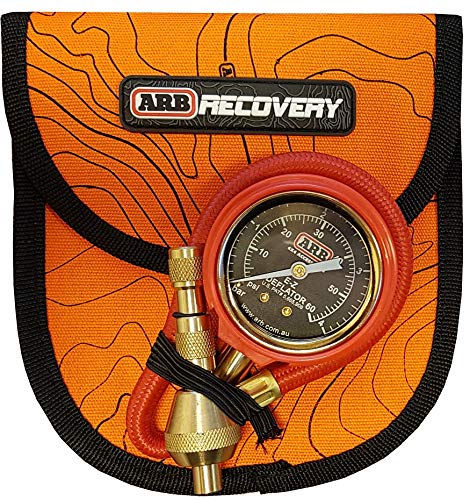
Our number one choice is a simple deflation tool. It essentially screws onto the valve stem just like a valve stem cap but it pushes in the stem and lets air out. It will remind you of when you were a kid pushing in the stem on your friends bike with a stick as a prank, but easier to use.
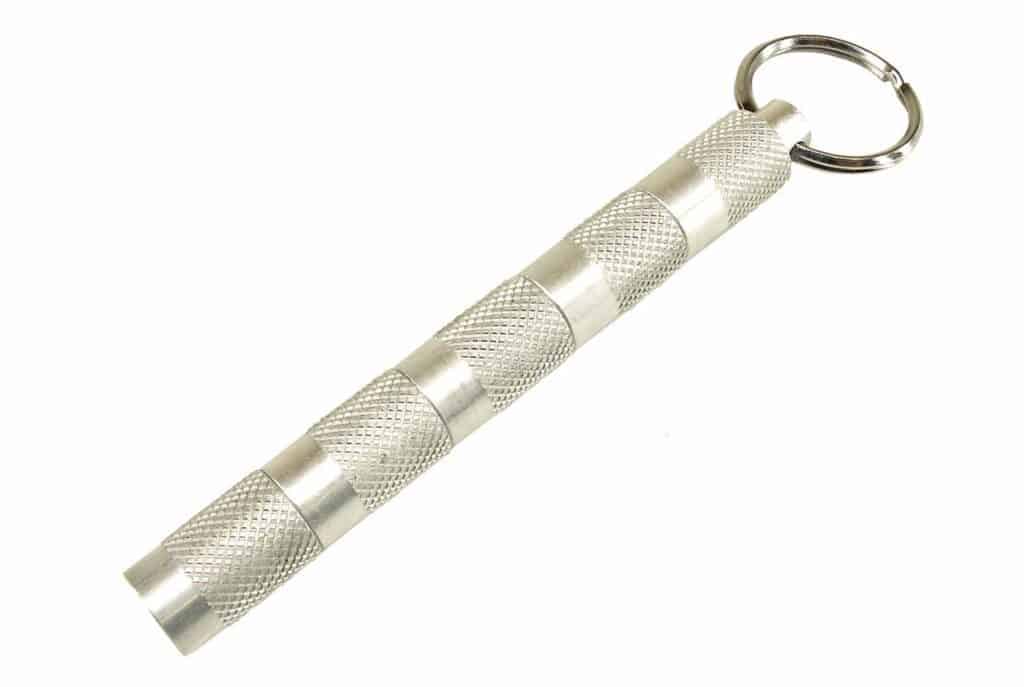
While the stem pullers are a little faster they are more expensive which is why we like the deflation tool best.
Tire Pressure Gauge
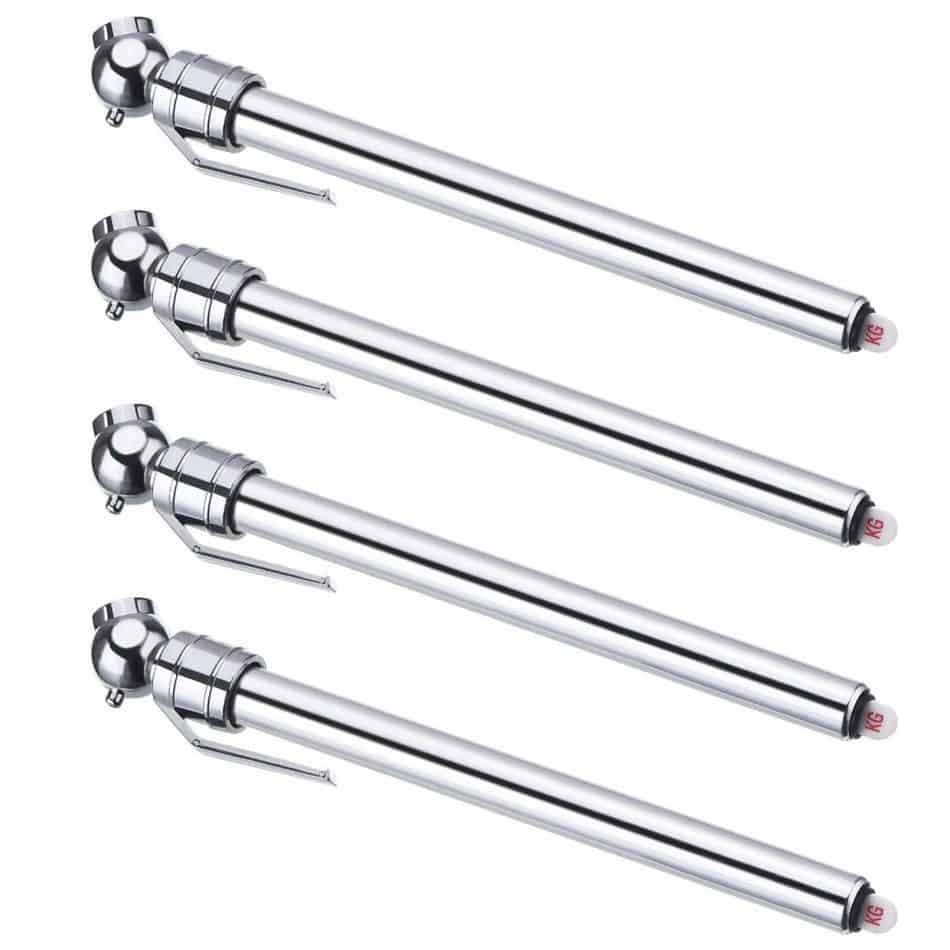
Keep track of how much air you have let out by utilizing a tire pressure gauge. Depending on your needs you can pickup a digital gauge which can offer a more info than just your PSI or go with a simple manual gauge. While we like a digital gauge having a gauge that does not require batteries is a must so at least carry a backup. We like this simple key-chain gauge as a backup to a solid digital gauge.
A tire pressure gauge will help you check the pressure as you let air out so that you know when to stop. They can also be helpful when airing back up to check pressure (although most compressors will have one built in, it never hurts to have a backup)
Air Compressor
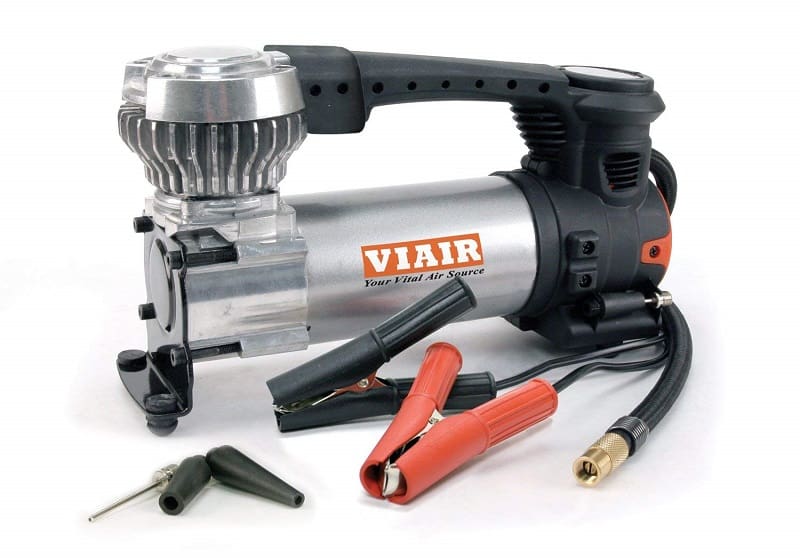
After a long day on the trail you are going to want to air back up before hitting the pavement. The two most popular methods are using either a CO2 system or an air compressor. Air compressors can be either on-board systems or external portable compressors. On-board air is usually stored under the hood or somewhere else in the vehicle, and are permanently attached and utilize your vehicles battery to operate. These systems can be a little pricey to install but they if you are hitting the trail a lot having quick access to air can be very handy.
External compressors are really handy if you want to move your compressor from one vehicle to another as well as utilize it in other scenarios.
CO2 systems are growing in popularity primarily due to their speed. Canisters are filled by a professional and each charge can quickly air your rig up multiple times before needing a charge. Many users report that they can air back up more than twice as fast as a traditional air compressor.
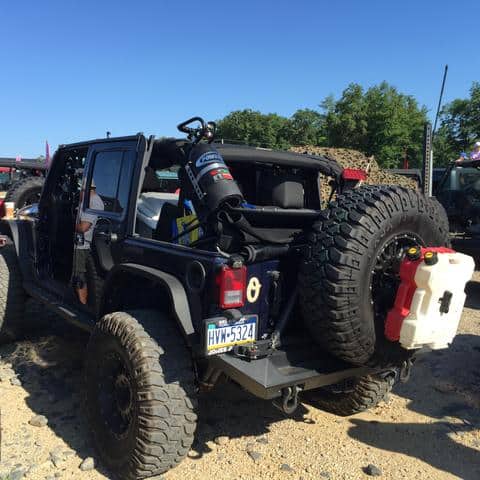
So whether you are planning an entire day out on some forest roads or a day on the Rubicon Trail airing down can improve your ride, give you better traction and help prevent punctures. When do you air down and what pressure do you normally run? Let us know in the comments!

